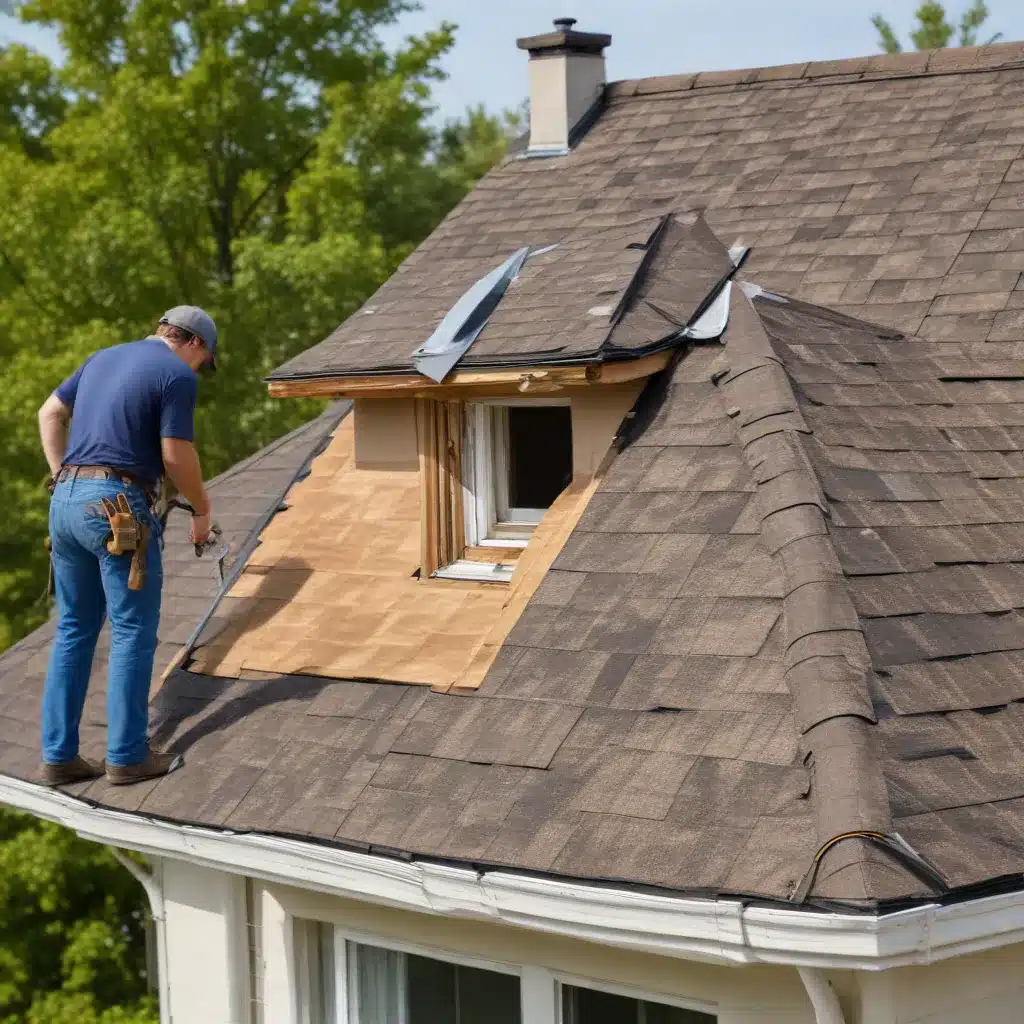
Assessing the Condition of Your Roof
As a seasoned roofing professional, I understand the importance of making informed decisions when it comes to the maintenance and upkeep of your home’s roof. Whether you’re dealing with a recent storm-related issue or simply noticing signs of general wear and tear, the question of whether to repair or replace your roof can be a complex one.
The first step in determining the best course of action is to carefully assess the current condition of your roof. This involves a thorough inspection, both from the ground and, if possible, from up close on the roof itself. Look for missing, cracked, or curling shingles, as well as any signs of water damage, such as stains or leaks. It’s also important to consider the overall age and lifespan of your roof, as well as the type of roofing material used.
Factors to Consider: Repair or Replace?
Once you’ve evaluated the state of your roof, you can start weighing the pros and cons of repairing versus replacing it. Here are some key factors to consider:
Age and Lifespan of the Roof
The age of your roof is a significant factor in the decision-making process. Most roofs have an expected lifespan of 10 to 15 years, depending on the material and manufacturer. If your roof is relatively young, with only minor damage, a repair may be the more cost-effective and practical solution. However, as a roof approaches the end of its expected lifespan, even smaller issues may indicate that a full replacement is the better choice.
Extent of the Damage
The scope and severity of the damage to your roof are also crucial considerations. If the damage is isolated to a small area, such as a few missing or damaged shingles, a repair may be sufficient. But if the damage is more widespread, with leaks, water intrusion, or structural issues, a full replacement may be necessary to address the underlying problems and prevent further deterioration.
Compatibility and Aesthetics
Another factor to consider is the ability to match new materials with the existing roof. As shingles age, they can become discolored or mismatched, making it challenging to find a perfect replacement. In these cases, a full roof replacement may be the best option to ensure a cohesive and aesthetically pleasing appearance.
Cost Considerations
The cost of repair versus replacement is often a significant concern for homeowners. While a repair may seem like the more budget-friendly option in the short term, it’s important to consider the long-term implications. Repeated repairs can quickly add up, potentially costing more than a full replacement would have. Additionally, a new roof can increase the value of your home and may be a selling point if you plan to list it in the near future.
Energy Efficiency and Upgrades
Roof replacement offers an opportunity to improve the energy efficiency of your home. Modern roofing materials and techniques can significantly enhance insulation and reduce energy costs. Moreover, a full replacement allows you to consider upgrading to a higher-quality, more durable roofing system that may better withstand the elements in your local climate.
Comparing Repair and Replacement Costs
To help you make an informed decision, let’s take a closer look at the typical costs associated with roof repair and replacement:
Roof Repair Costs:
– Replacing a few missing or damaged shingles: $150 – $500
– Patching a small area of the roof: $300 – $800
– Partial roof replacement (one section): $2,000 – $6,000
Roof Replacement Costs:
– Full roof replacement (average-sized home): $10,000 – $30,000
– Upgrading to a higher-quality roofing system: $15,000 – $45,000
It’s important to note that these figures are just rough estimates and can vary significantly based on the size and complexity of your roof, the materials used, and your local market conditions. It’s always best to consult with a reputable roofing contractor for a personalized assessment and quote.
Roof Repair or Replacement: Making the Right Choice
Ultimately, the decision to repair or replace your roof will depend on a combination of factors, including the age and condition of your current roof, the extent of the damage, your budget, and your long-term plans for the home.
If the damage is limited and your roof is relatively young, a repair may be the more cost-effective and practical solution. However, if the damage is more extensive or your roof is nearing the end of its lifespan, a full replacement may be the better investment, as it can provide improved energy efficiency, enhanced durability, and increased home value.
Remember, as a homeowner, it’s essential to work closely with a reputable and experienced roofing contractor, like those at Roofers in Northampton, to ensure you make the right choice for your home. They can provide a thorough assessment, guide you through the process, and help you weigh the pros and cons of each option to make an informed decision.
Conclusion
Caring for your roof is a vital aspect of maintaining the overall health and value of your home. By understanding the factors that contribute to the decision of whether to repair or replace your roof, you can make a well-informed choice that aligns with your budget, your home’s needs, and your long-term goals. With the right guidance and expertise, you can ensure your roof continues to protect your home for years to come.

